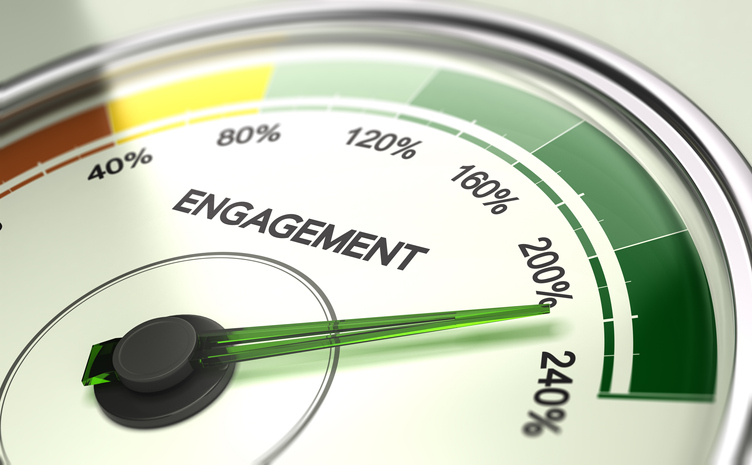Traumatic experiences – such as sexual or physical abuse, natural disasters (hurricanes, earthquakes, floods, forest fires), human‐made disasters (plane crashes, bombings, accidents) and military combat – can evoke significant symptoms of distress. When these intense emotional reactions endure, they can lead to post-traumatic stress disorder (PTSD).
When someone you love has PTSD, it doesn’t just affect them. It can also affect you and the other people in their life. Behaviours and emotions characteristic of PTSD – such as fear, hypervigilance, mistrust, moodiness, withdrawal and anger – can make it hard for you to be calm, patient and loving. PTSD can also have physical symptoms, including increased blood pressure and heart rate, fatigue, muscle tension, nausea, joint pain and headaches.
Your loved one’s behaviours and their emotional and physical symptoms can leave you feeling helpless and sometimes hurt, but there are ways you can help while also caring for yourself. Your love and support can be important in helping your loved one heal.
Ways to Help Someone with PTSD
- Learn about PTSD. Educate yourself on the symptoms of PTSD, how it affects people and how it is treated. Being informed can help you understand what your loved one is going through and why they act the way they do.
- Ask how you can help. Don’t assume that your ideas for helping your loved one are the best ones or even that they will be welcome. Ask how you can be helpful, and respect your loved one’s preferences. Accept that your loved one may not want your help, and try not to take it personally. Withdrawal and mistrust are common symptoms of PTSD. Engage with your loved one in ways that are comfortable for them, recognising that trauma is experienced in many ways.
- Encourage treatment. PTSD is a serious mental health issue that typically requires professional treatment. You can’t make someone get treatment, but by being a supportive and trusted presence in their life and by knowing about treatment options that have proved effective – such as eye movement desensitisation and reprocessing (EMDR), exposure therapy and trauma-focused cognitive behavioural therapy – you can help guide your loved one to the help they need.
- Spend time with your loved one in ordinary day-to-day activities. Prepare meals or watch a movie together. Play games or do puzzles together. Spend time with mutual friends. Your support can help your loved one reestablish a regular routine, which aids in reconnection with self and others.
- Engage in physical activities together. Go for walks, runs or bike rides together. Swim, dance, go rock climbing or take a yoga class together. Physical activity has tremendous benefits for physical and mental health – both for you and your loved one – and it’s a great way to spend time together.
- Encourage contact with family and close friends. Social support can play a huge role in overcoming PTSD, which is why your help and engagement are so important to your loved one. Encourage them to broaden that support by rebuilding and strengthening other connections that may have weakened.
- Help your loved one rebuild trust and a sense of safety. Let them know you’re there for them now and for the long term. Learn what makes them feel safe and how you can help them cope with stress reactions. Talk with them about the future, and make plans together. Help them settle into predictable daily routines.
- Help them build their confidence and sense of control by encouraging them to make decisions and handle tasks themselves. Remind them regularly of their strengths and what makes them special.
- Understand your loved one’s triggers. One characteristic of PTSD is that certain places, situations, sounds, smells or feelings can trigger intense stress reactions. Talk to your loved one to learn what triggers their stress reactions and to understand how you can help them cope if they encounter those triggers while you are with them. You might offer a hug, words of reassurance or help in using grounding or relaxation techniques. (Note that this does not mean shielding your loved one from all triggers. Let them decide how and when to engage with things that may cause fear or anxiety.)
Communication Tips
- Be a good listener. Don’t interrupt or disagree. Listen to understand. Repeat what you’ve heard, and ask questions to be sure you’ve understood correctly. Don’t feel that you need to solve your loved one’s problems or come up with solutions. Just listen and show that you’re hearing.
- Don’t push your loved one to talk. Some people with PTSD find it painful to talk about their traumatic experience and difficult to describe what they are going through. Let them know that you’re available to listen if and when they are ready to talk.
- Be patient. A person with PTSD may need to talk about their traumatic experience over and over again. Don’t show your impatience or tell them to stop worrying about the past. Talking through what has happened can be part of their healing process; by listening, you can help them heal.
- Accept your loved one’s reactions as real. Don’t dismiss their fears as unrealistic or their stress reactions as unreasonable. Avoid unhelpful and dismissive statements like ‘It could have been worse’ or ‘You’ll be fine’. Difficult thoughts and emotions and intense stress reactions are the reality of a person with PTSD. If they could move on from them or get over them easily, they would.
- Don’t judge or show your disapproval. Some of the things your loved one tells you may be difficult to hear. Accept that their traumatic experience is their reality. Listen with empathy and without judgment so they know it’s safe to share their stories, thoughts and feelings with you.
- Suggest a break when you sense the conversation is becoming too intense for your loved one. If they agree, be sure to follow through and continue the conversation at another time.
Dealing with Anger or Violent Behaviour
Anger is a common reaction to trauma and can be a characteristic of PTSD:
- If your loved one has angry outbursts, agree together, when you are both calm, on ways to defuse these situations. One way is to set up a time-out system:
- Agree on a signal that either of you can use – perhaps a word or hand signal – to indicate that you need a time-out to step away from the situation or conversation.
- Let each other know where you’ll be and what you’ll be doing during the time-out and when you’ll come back.
- After the time-out, take turns offering solutions to the problem without interrupting each other.
- Use ‘I’ statements (‘I think…’ or ‘I feel’) rather than ‘you’ statements, which can be heard as accusations.
- Listen to each other’s ideas without criticizing them.
- Together, decide which solution you’ll try.
- If your loved one’s anger leads to violent behaviour or abuse, you need to go to a safe place – away from the home or in a locked room – and call for help. If you have children, make sure they are in a safe place as well.
Take care of yourself.
Helping someone with PTSD can be draining. To sustain the energy and patience for that support, and to maintain your own physical and mental health, you need to take care of yourself:
- Eat healthy meals.
- Engage in regular physical activity.
- Get the sleep and rest you need.
- Share the helping role by asking friends and family members to help in ways that allow you to take a break.
- Set boundaries for yourself that acknowledge your limits and give you time to attend to your own needs.
- Spend time on activities you enjoy.
- Spend time with close friends – people who aren’t connected with your loved one’s trauma, who can make you laugh and with whom you can share your feelings.
- Take time to be by yourself.
Seek help.
Recognise that hearing stories of trauma can cause you to have traumatic stress reactions, as can being around someone whose behaviour is unpredictable or abusive and whose emotions are volatile. Help options for you include
- Professional therapy to help you manage stress, deal with difficult emotions and learn ways to attend to your own needs
- Support groups with others who are helping a loved one with PTSD
- Family therapy to talk about how the family is affected by helping the person with PTSD and learn ways to share the responsibility, provide more effective help, and meet the needs of all family members
For More Information
‘Helping Someone with PTSD’, Helpguide
https://www.helpguide.org/articles/ptsd-trauma/helping-someone-with-ptsd.htm



































